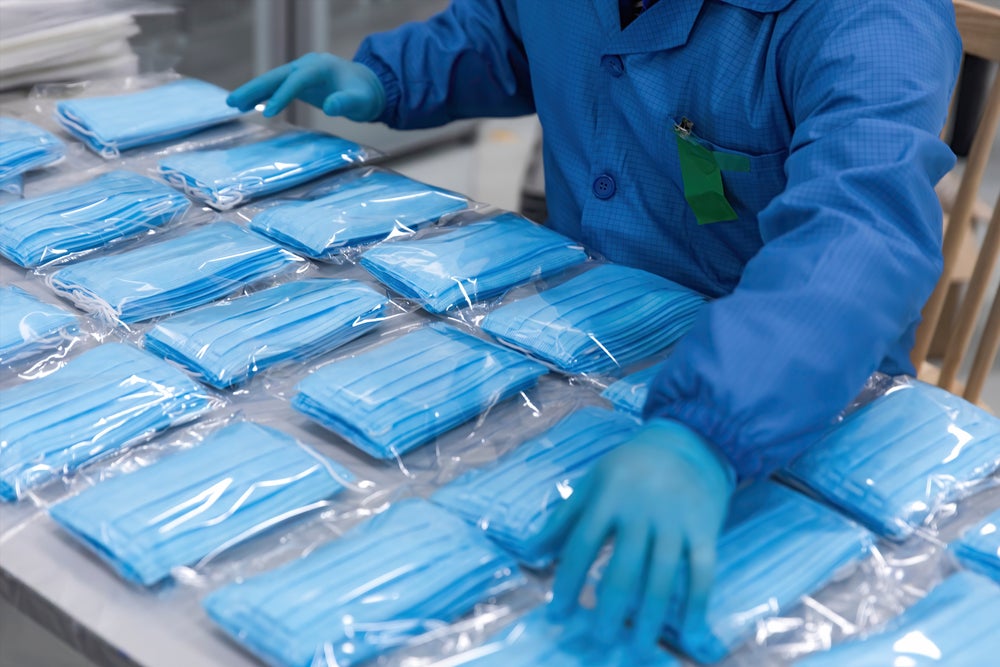
Outsourcing to China has become increasingly popular in many industries. The country’s standing as a viable, cost-effective location to outsource to has grown, but it remains a source of debate among medical device companies.
What are the real levels of quality available? How can manufacturers ensure the right quality checks are in place? And what are the regulatory and intellectual property considerations?
Business activity in China can be categorised under two headings: sourcing from and selling in. Both are critical to a successful China strategy. Beyond competitive labour costs, outsourcing functions such as design, manufacturing and fulfilment can help multinational organisations improve quality and help meet consumer and regulatory demands, while freeing up resources to be deployed elsewhere.
It could also increase speed-to-market and provide a route to increasingly competitive and sophisticated Chinese research, science and technology.
Although there have been many negative intellectual property stories regarding China, its government takes them very seriously – growth brings legitimacy for the Chinese Government and guarantees social stability. Regulatory issues also need to be considered; the US Food and Drug Administration’s Center for Devices and Radiological Health holds multinational medical device manufacturers accountable for the quality of the end product and level of quality within the whole supply chain.
See Also:
China’s legislative progress
How well do you really know your competitors?
Access the most comprehensive Company Profiles on the market, powered by GlobalData. Save hours of research. Gain competitive edge.

Thank you!
Your download email will arrive shortly
Not ready to buy yet? Download a free sample
We are confident about the unique quality of our Company Profiles. However, we want you to make the most beneficial decision for your business, so we offer a free sample that you can download by submitting the below form
By GlobalDataChina has made substantial legislative progress in the reform of its regulatory system over the past few years, providing the basis for a more predictable – and therefore efficient – marketplace. The recent trend towards transparency, particularly in opening draft laws and regulations for consultation, is also very welcome.
The Chinese Government has also implemented an incredible change within the medical device regulatory environment, which is overseen by the State Food and Drug Administration (SFDA). The SFDA has ten national testing centres, which are accredited by the China National Accreditation Committee for Laboratories and the General Administration of Quality Supervision, Inspection and Quarantine. They are responsible for product quality supervision, maintaining technical standards, and testing and evaluation for medical devices.
Other improvements include the strengthened supervision of manufacturers, new regulations to improve medical device quality, standardised registration for medical electrical equipment, an increase in the number of random and unannounced inspections of medical device documents, and a new pricing policy for medical devices.
But with mounting pressure for multinational organisations to develop tighter controls on vendors, it is advised that all medical device manufacturers prune or create an approved vendor list. Carefully selecting companies for an approved list presents the opportunity to develop strategic partnerships and gain invaluable experience from vendors who are best-in-class. There are six factors that should be considered when building a best-in-class vendor list, as follows:
- Quality metrics and standard operating procedures.Detailed quality metrics and standard operating procedures must be defined and agreed with the vendor, whereby the vendor takes full responsibility and ownership.
- Auditing.The more the better. The organisation must feel confident that the vendor has full compliance, and that any potential shortcomings are identified at an early stage. Involving suppliers from the outset on is a big part of successfully managing regulatory compliance: quality and regulatory issues are put on the table at an early stage, ensuring strong programme management, and quality and regulatory participation throughout development.
- Balance scorecard.Applying a balance scorecard to the vendors with proper controls in place will make sure that they continue to deliver continuous improvement in the future.
- Dual supply.This is a critical consideration, not only due to changing regulatory requirements, but also to eliminate risk in the event of problems in the supply chain.
- Relationship building.Intellectual property concerns fade into the background when a company moves forward with the right organisations and partnerships, applies good due diligence and works with proper contracts. Clear communication between a medical device manufacturer and vendors is essential: there must be a mutual understanding of regulatory requirements. Regulatory compliance is not a function you can outsource, but outsourcing should be a partnership, and the quality functions of the medical device manufacturer and the vendor must be in sync. Setting up a regular communications schedule will make it easier for both parties to share information.
- Experience.Quality starts with selecting the right outsourcing partners. It is highly recommended that all suppliers are US Food and Drug Administration registered and ISO certified, as this demonstrates that they already have a commitment to quality.
Changing market
China has experienced rapid growth since it opened up to foreign investment in 1978, rising to become one of the world’s largest economies. Despite the global recession, China’s economy grew by 8.7% in 2009, and the World Bank predicts a 9.5% growth in GDP in 2010.
The number of private companies in China rose to 6.6 million by the end of 2008 from 140,000 in 1992, even as the number of foreign corporations grew to 435,000.
Despite facing one of the toughest global economic environments in several generations, most US companies report continued profitability in China in 2009 and still see the Chinese market as a tremendous growth opportunity.
If anything, China has grown in relative importance during the global recession, and US companies operating in China have improved their profit margins compared with those in other markets.
In the first half of 2009, the top 500 Chinese companies had net profits of $170.6bn, making them more profitable than the top 500 US companies (which recorded net profits of $98.9bn) for the first time. Meanwhile, management consultant McKinsey reports that the residents of 25 of China’s largest cities expect to see their purchasing power double over the next five years.
Industry value growth
China’s medical device industry has seen double-digit growth in recent years, and has become a viable market opportunity for multinational and domestic companies. The market had an estimated value of $11.2bn in 2007, and is forecast to reach $20.6bn by 2012.
Experts have attributed this growth to the country’s focus on improving health coverage in rural areas and the fact that more of its citizens can afford home-use devices and high quality implants. But new prosperity brings new dietary habits, and with them new health issues: cancer, cerebrovascular disease and heart disease are the three most common killers in the country, and demands on the health system have risen to unprecedented levels.
The Chinese Government has set aside $123bn to address shortfalls in its healthcare system by 2011. Under its Medical Reform Plan, China intends to establish a universal healthcare system that will serve 90% of its population and improve care facilities and other health-related infrastructure. Around 2,400 new health centres will be built in urban areas; another 3,700 centres will be rebuilt and restructured.
The government also plans to restructure some 11,000 community health clinics. To honour commitments made when it joined the World Trade Organisation in 2001, China imposed lower import tariffs on 600 commodities, effective from 1 Jan 2010, including medical products and pharmaceuticals.
The government said it hopes the cuts will increase domestic spending on foreign products to boost industrial and rural development. From an industry perspective, the lower tariffs should result in lower retail prices and higher spending on foreign medical devices.
Demand for Western medical devices
There is desire from the Chinese population, according to a survey by the China Market Research Group. Consumers believe that Western brands of medical devices are better quality than Chinese ones. And because they see them as being more reliable, the majority of respondents said they would pay an extra 20% for them.
The issue is not about China’s standing as a viable, cost-effective outsource location, or a question about what level of quality is available – it is more a debate as to how to operate in China.
Companies must develop a China strategy that can be integrated into their operations elsewhere so that they can benefit from a global competitive advantage in terms of supply and sales. Companies that continue to hesitate may find it difficult to break into the Chinese market in the future.







